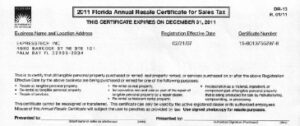To record accounts payable, the accountant credits accounts payable when the bill or invoice is received. This is simply in reference to the fact that the account represents the company’s short-term liabilities. Every time there’s a transaction, an accounting software tool will record when it occurred, who handled it, and professional bookkeeping services for your business accurate financial records whenever each step of the payment process happened. Paying invoices in a timeframe that keeps cash flow liquid and obligators satisfied is a common challenge.
What are Examples of Accounts Payable Expenses?
- The main goal of implementing the accounts payable process is to ensure your bills are paid and that invoices are error-free and legitimate.
- Accounts Payable (AP) is an accounting term that refers to money owed to suppliers, vendors, or employees for goods or services purchased on credit.
- But this amount is more than just an IOU — accounts payable represents a company’s short-term debts.
- The primary difference between accounts payable and accounts receivable is the impact on a company’s cash flow.
- Given the accounts payable balance as of the beginning of the accounting period, the two adjustments that impact the end of period balance is credit purchases and supplier payments.
These majorly represent your business’s purchasing hosting an accounting event or borrowing activities. Further, special emphasis must be given to accounts payable representing larger transactions. Once the sample invoices are reviewed, each of them must be confirmed and verified. You must also review and verify loans, principal balance, and interest rate.
Accounts Payable vs. Accounts Receivable
Building trustworthy and strong relationships with suppliers are essential, because it’ll help you to receive goods on better credit terms from your vendors. Accounts payable (AP) is a liability, where a company owes money to one or more creditors. Accounts payable is often mistaken for a company’s core operational expenses. However, accounts payable are presented on the company’s balance sheet and the expenses that they represent are on the income statement. Accounts payable is a liability since it is money owed to creditors and is listed under current liabilities on the balance sheet.
For example, consider the case of an air ticket invoice for business travel sold to a company that makes widgets. Now, we’ll extend the assumptions across our forecast period until we reach a COGS balance of $325 million in Year 5 and a DPO balance of $135 million in Year 5. Ensure that the bill includes vendor name, authorization, date, and verified and matching requirements to the purchase order. Explore GnuCash’s features, safety, and comparisons with Bench Accounting, QuickBooks and other alternatives. Our mission is to empower readers with the most factual and reliable financial information possible to help them make informed decisions for their individual needs. Our goal is to deliver the most understandable and comprehensive explanations of financial topics using simple writing complemented by helpful graphics and animation videos.
It’s about balancing what you owe and what you’re owed — a fundamental aspect of financial management in any business. But this amount is more than just an IOU — accounts payable represents a company’s short-term debts. These amounts are paid within a year, typically to suppliers who have provided products or services essential for running your business. Whether it’s for office supplies, inventory, or professional services, these are all part of your business’s ongoing operations. Robert Johnson Pvt Ltd needs to determine its accounts payable turnover ratio for 2024. It had an opening accounts payable balance of $500,000 and a closing accounts payable balance of $650,000.
In simpler terms, it’s similar to having a credit card for your business, where you buy now and pay later. Accounts payable is a general ledger account that showcases the amount of money that you owe to your creditors/suppliers. If yo receive an invoice mentioning the payment terms from your supplier, it then gets recorded in your accounts payable ledger. Whenever your supplier provides goods or services on credit to your business, there are accounts payable outstanding on your balance sheet.
The debit could also be to an asset account if the item purchased was a capitalizable asset. When the bill is paid, the accountant debits accounts payable to decrease the liability balance. The offsetting credit is made to the cash account, which also decreases the cash balance. When a business receives goods or services, the accounts payable increases by recording a credit to this account. Once the payable amount is paid, the accounts payable balance decreases by recording a debit.. Understanding the dynamics of accounts payable and receivable is crucial for managing a business’s working capital and ensuring a healthy cash flow.
Analysis of Accounts Payable Turnover Ratio Formula
Accounts payable are a liability account, representing money you owe your suppliers. Accounts receivable on the other hand are an asset account, representing money that your customers owe you. Ensuring that accounts payable are paid on time will help strengthen your company’s relationship with your suppliers. In return, the suppliers will likely offer attractive discounts so that you can save more and stay connected with the supplier. You need to keep a track of your accounts payable to know when the payments are due, so you can make the payments to your suppliers on time.
Owners must consider the timing of cash inflows from accounts receivable and the cash outflows required for accounts payable. The outstanding payment owed to suppliers and vendors by a business will remain constant until the payment obligation is fulfilled (i.e. the payment is paid for in-full via cash). Therefore, accounts payable is classified in the current liabilities section of the balance sheet, as the accumulation of unfulfilled payment obligations imply a future “outflow” of cash.
General Ledger Account: Accounts Payable
Further, the clerk undertakes the processing, verifying, and reconciling the invoices. Also, he pays suppliers by scheduling pay checks and ensures that payment is received for outstanding credit. Since you’ve purchased goods on credit, the accounts payable is recorded as a current liability on your company’s balance sheet. Generally, when a company purchases goods or services on credit from a vendor, the vendor will issue an invoice which the company must then pay back within the agreed-upon terms.









